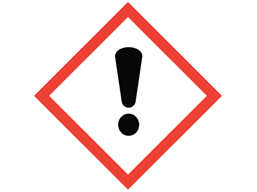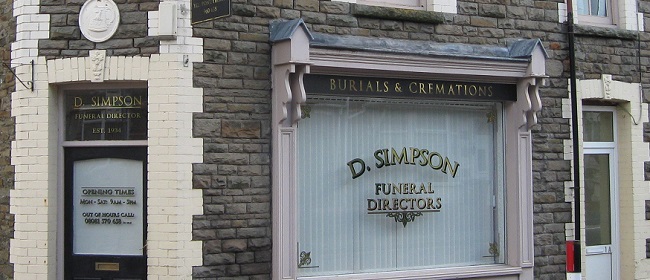
Britain worked itself up into a lather last week when it was announced that, under new EU legislation, the makers of Fairy Liquid would have to print a GHS harmful/irritant warning on all bottles starting from June 2017. News outlets like the Daily Mail were quick to paint this story as yet another example of Brussels bureaucrats terrorising the British way of life - here's the headline from www.dailymail.co.uk:
Procter and Gamble, the manufacturers of Fairy Liquid, have expressed their anger at this ruling, which they worry will discourage people from using their product and contradict the brand's long-established 'soft on skin' image.
However, it should be pointed out that washing-up liquid (including "beloved and quintessentially British brand" Fairy Liquid) is, in fact, hazardous if misused. As the Mail themselves point out, the required GHS label (a black exclamation mark inside a red border) will warn consumers that Fairy Liquid may cause "eye irritation, respiratory tract irritation, and have narcotic effects". All of which is true - even soft, kind Fairy Liquid should not be ingested, inhaled, or allowed to make contact with the eyes.
The potential hazards of washing-up liquid need to be clearly marked on the products to promote safe use, and this is all that the new EU legislation aims to achieve. Instead of criticising the move, news outlets would do better to educate their readers as to the exact meaning of GHS labels and the ways in which labelled products can and can't be safely used. It's time to stop criticising health and safety culture and start helping to keep people safe!
See also:

Earlier this week, the Daily Mail reported that funeral directors may be at increased risk of developing motor neurone disease (MND) if they work with formaldehyde. This news was based on a recent American study, which found that "men* in jobs with high probability of exposure versus no formaldehyde exposure had an almost three times greater rate of mortality from motor neurone disease".
Funeral directors sometimes use formaldehyde to embalm dead bodies (an increasingly popular option amongst grieving families who wish to view the deceased in a chapel of rest), but use of this chemical is carefully regulated - this report isn't the first to link formaldehyde to nerve damage. The aforementiond Mail article features a quote from Alan Slater, CEO of the National Association of Funeral Directors, who made it clear that health and safety guidelines are crucial for the protection of funeral directors who use formaldehyde; Slater specifically cited "the use of appropriate protective clothing and equipment" as an important factor, along with "a strict adherence to manufacturers' instructions".
Here at Label Source, we sell a wide range of products that can be used to minimise risk when using such hazardous chemicals as formaldehyde. Our COSHH signs remind employees to wear personal protective equipment (PPE) and observe the relevant precautions, while our UN labels should be used to identify hazardous substances when in transit.
Visit our Hazardous Substances & Chemicals department to browse Label Source's full range of chemical hazard products.
*The same results were not observed in women, but according to the Mail article, "this could be because the amount of women in the study with exposure to high levels of formaldehyde was too small".
COSHH stands for Control Of Substances Hazardous to Health. COSHH is a set of regulations that, since 2002, has governed the use of hazardous substances and chemicals in the UK.
The regulations were put into place so as to protect workers and other people from potentially dangerous substances. They state that employers must not expose their staff to such substances without first carrying out a risk assessment and taking steps to minimise the danger.
This can mean making changes that will make the substances themselves safer (e.g. using solids rather than liquids to prevent splashes and spills), but it also means identifying and labelling hazards so that everyone is aware of them.
This should be achieved through the use of COSHH-approved signs and tapes, which are specifically designed to effectively warn of substance-related dangers. These clearly marked and highly visible warning products can alert workers to a variety of hazards, including:
- Flammable goods
- Toxic substances
- Corrosives and irritants
- Biohazards
- Radioactive materials
COSHH signs should also be used to...
- ...remind workers of the appropriate precautions (e.g. keeping doors shut)
- ...advise the use of PPE
- ...warn of the presence of hazardous substances
- ...give additional information on the safe use of these substances
The COSHH regulations are designed to keep you, your employees, and everyone around you safe. Please visit the HSE website for further details, or select one of the links below to see our range of COSHH safety products.
UN labels are self-adhesive black and white labels that are designed to be affixed to vehicles that are carrying hazardous chemicals and substances. Their marine-grade adhesive ensures that they are suitable for practically any vehicle, including cars, vans, lorries, trains, ships, and airplanes. They look like this:
How do UN labels identify hazardous materials?
Every UN label bears a four-digit number that corresponds to a specific substance. For instance...
- UN 1210 refers to printing inks.
- UN 1986 indicates the presence of flammable alcohol.
- UN 2810 is the UN number for pesticides and weed killers.
These numbers were assigned by the United Nations Committee of Experts on the Transport of Dangerous Goods (UNCETDG), and so each number is an international standard for the identification of its respective substance.
Who needs to display UN labels?
According to UN regulations, any vehicle containing potentially hazardous substances of any kind should be identified as such with the relevant UN label(s). This applies to vehicles travelling by road, rail, air and sea.
How do I find out the UN number for a specific substance?
A comprehensive list of UN numbers can be found on Wikipedia.
Do Label Source sell a label for every UN number?
Not quite. We do have a very wide range, covering all of the most common eventualities, but if you need a number that we don't stock, you can always purchase a blank UN label with a write-on panel.
Click here to see our full range of UN labels.